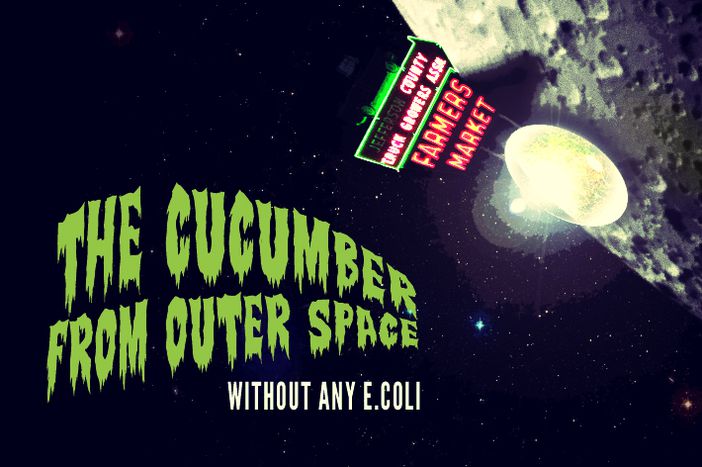
Space cucumbers in battle against E. coli
Published on
Translation by:
 Tansy Larsen
Tansy Larsen
While European scientists still haven’t managed to identify the exact source of the E. coli epidemic that has struck Germany, a Japanese astronaut has decided to rise to the challenge. Taking off on the morning of 8 June, Satoshi Furukawa, a crew member of the latest mission to the International Space Station (ISS), intends to grow space cucumbers
What's to be done? The foodborne epidemic known as E. coli has already caused 25 deaths in Europe (24 in Germany alone) and continues to spread despite advice from health authorities. While ecologists and biologists fiercely argue over the origins of this epidemic outbreak, a pseudo-solution is offered from space. As a member of Expedition 28 responsible for carrying out scientific experiments aboard the space station, Satoshi Furukawa hopes to make the most of his semester in orbit by growing cucumbers.
Green-fingered astronauts
While defying the laws of gravity, the Japanese astronaut will also challenge those of biodiversity. But the intention of this article is not to provide a theory for cultivating vegetables in weightless conditions. The big news here is that astronauts do gardening. And like all good gardeners, they have their own special techniques. According to the French online 'spatial conquest forum' ('le forum de la conquête spatiale'), the space vegetables will be the fruits of the on-board 'Lada mini-greenhouse’: equipment that allows the growing of crops, including dwarf wheat and tomatoes. According to the forum’s moderator, ‘Wheat has already been grown in orbit towards the end of 2009; the flight engineer of Expeditions 21 and 22, Maxim Surayev, had sown seeds, producing a very good harvest three months later, which he then brought back down to Earth.’
So, why cucumbers? In times of such agricultural adversity, the vegetable could adopt a new habitat; far from polluted water tables, antibiotics and manure. From soviet Russian Trofim Lysenko’s theories, we know that it is possible to modify a plant’s genetic characteristics by affecting its environment. As such, the operation of the ‘Lada mini-greenhouses’ will study the impact of space flight on the growth and development of the plants cultivated inside them. So, if you ever take a little tour of Mars aboard British entrepeneur Richard Branson’s Virgin Galactic space shuttle, you can create your own ideal ‘interplanetary garden’ with just a lighting unit and a water supply. For the time being, Furukawa has stated that the crew members will not be allowed to eat their own crops. But who knows? This may well become the first time that a man on the moon could solve some very “down-to-earth” problems.
Translated from Contre l'E.coli, les concombres de l'espace


